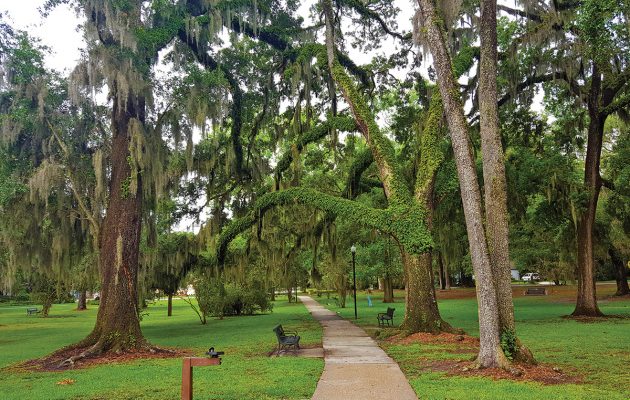Trees for the planting, thanks to tree mitigation fund

If you’ve always wanted or needed to plant a tree in the right-of-way in front of your property, now you can, thanks to the City of Jacksonville’s tree settlement with a variety of civic groups in July 2017.
The suit filed in 2015 by the Public Trust Environmental Legal Institute of Florida challenged the city’s use of the Tree Mitigation Trust Fund established in 2000 by charter amendment. Developers pay into the fund when they cut down trees and the money is supposed to be used to mitigate the loss by paying for new trees to be planted elsewhere in Duval County.
Although the $20 million settlement provides funds for trees to be replaced or added to public property, including that strip of grass between the street and the sidewalk in front of your home, each request for a tree requires that a bill be filed for approval by the Jacksonville City Council.
With the potential for thousands of trees to be requested throughout the county, council members are looking for ways to combine requests into fewer bills. In the Riverside/Avondale historic district, property owners can funnel their requests through Riverside Avondale Preservation, which will work with Rick Leon, the City’s Urban Forest Manager, and Kathleen McGovern, the City Arborist, to present a unified plan to District 14 Councilman Jim Love. As he has done with two bills thus far, Love will create a new bill to request funds for 400 or so trees in Riverside and Avondale.
In March, Love submitted a bill to appropriate $85,366 to replace aging trees in nine medians on King Street in the Park and King business district. In April, he submitted another bill for $31,232 for a tree planting on several streets in Avondale, such as Avondale, Belvedere, Challen, Edgewood and Hollywood Avenues, Oak Street, and Windsor Place.
The schedule for RAP reLEAF began last month with two community kickoff meetings to enlist residents in the information collection process. Property owners may find a notice left at their doors requesting they indicate a preference for or against having a tree planted in the right-of-way in front of their properties.
McGovern, the City Arborist, has selected a list of 18 specific species, including five types of large shade trees, to fit the right tree into the right location, said Nancy Powell, RAP board chair.
By the end of June, RAP hopes to have a tree plan developed so Councilman Love can file his third bill. RAP is planning a tree workshop sometime this fall to share information on the initial care for new trees. The first phase of planting will be late fall, November-December, with a second phase in January-February 2019.
For property owners in other parts of District 14, such as Murray Hill, Ortega, Ortega Forest and Venetia, there is an opportunity to jump on the tree bandwagon and piggyback your request with the RAP reLEAF initiative by going through 630City.
Visit 630city.coj.net, click on “Create” and type “tree” in the search bar. Scroll down and click on “Tree Replace – Plant New.” In the box asking for relevant information, indicate you are in District 14 and are requesting tree(s) through the tree mitigation fund.
Leon and McGovern will collect those requests which come in through 630City and add them to the appropriations bill or, if there are enough requests made by property owners outside of the Riverside Avondale district, into a separate bill.
By Kate A. Hallock
Resident Community News






